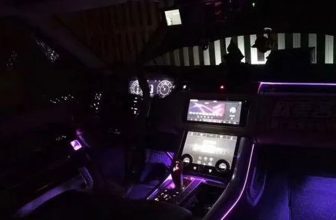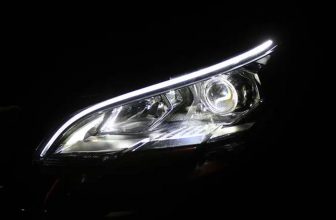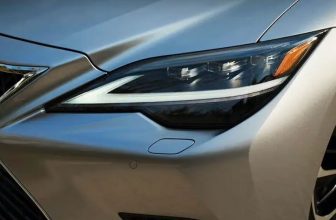
Compared with traditional halogen lamps and xenon lamps, LEDs have unique advantages, such as long life, high luminous efficiency, fast response, small size, and strong design plasticity. In recent years, LEDs have gradually been used in automotive headlights, especially in high-end models. However, compared with traditional light sources, LED car lights also have unique issues that must be considered, and light color performance is one of the important aspects.
Due to its own luminous characteristics and temperature effects, LED car lights are prone to problems such as color drift and spatial color unevenness, which not only affect the overall appearance of the car body, but also pose potential safety hazards. The article will focus on the characteristics of LED car lights and the causes of poor light and color performance, introduce the requirements of relevant standards for the color performance of car lights, and discuss the color performance of LED car lights.
#1 Introduction
LED is a semiconductor device that directly converts electrical energy into light energy. It was initially used in indicator lights such as car meters in the early days. lamps, door lock lights and other interior lighting. In recent years, especially in some high-end models, LEDs have been gradually applied to automobile headlights, such as Lexus LS600h/LS600hL models, Audi R8, etc., which first used LEDs as headlights. With the reduction of LED cost and the development of technology, some mid-range cars are gradually adopting LED as the lighting device of the headlights.
Compared with traditional light sources, LED has more advantages, such as long service life, and now LED claims that its service life has reached tens of thousands of hours or even higher, which determines that LED components do not need to be replaced within the design service life of the entire vehicle , in comparison, the life of the xenon lamp is only about 3000 hours, and the life of the halogen lamp is shorter; the LED has good shock resistance, is not easy to be damaged, and can be well applied to various environments; Small size, compact structure, easy layout, and shape design can greatly meet the design requirements of car manufacturers. It breaks through the shackles of previous lighting systems in terms of shape innovation, allowing people to have more novel car products.
#2 Relevant Standards For Headlights
There are two main systems for automotive lighting standards in the world, one is the ECE system in Europe, and the other is the SAE system in the United States. At present, my country’s automotive lighting standards use the ECE system as a reference.
In the standard, in addition to the clear and detailed requirements for the light distribution performance of the headlights, there are also requirements for the color of the headlights. More typically, in the standard of GB25991-2010 “LED Headlights for Automobiles”, there are the following regulations on light color: the light color of LED headlights should be white. In terms of color rendering, the standard requires that the content of LED red light components in the entire visible light range should be greater than or equal to 0.05. It is worth noting that the measurement should be carried out in at least two directions, that is, the low beam 50V and the high beam HV point Take measurements.
In addition, the SAE standard has strict regulations on the chromaticity coordinates of red, yellow, blue, white and other light rays, which must fall into the area shown in the figure below. In fact, automotive headlights using LEDs as light sources are prone to problems such as light color drift and spatial color unevenness. It should be ensured that the chromaticity coordinates fully fall within the specified range. Spatial color measurement and spatial photometric distribution measurement are also necessary. [1,2]
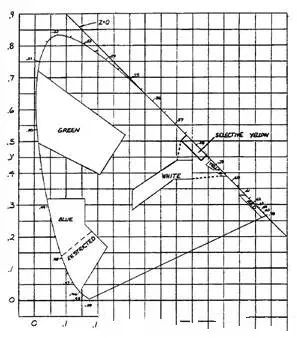
Figure 1 Corresponding area range on the chromaticity diagram
If the control is not good, the uneven color of the space will not only affect the overall appearance of the car body, but may also cause safety hazards. The uneven color of the space is manifested by the uneven color of the light radiated from the light source or lamps in all directions of the space, and the driver feels uncomfortable when driving under the uneven light color.
#3 Spatial Color Inhomogeneity Of LED Lights
Because LEDs are different from some traditional light sources, this makes LED product evaluation and related technical quality inspections a focus, especially the problem of spatial color inhomogeneity in LED light sources.
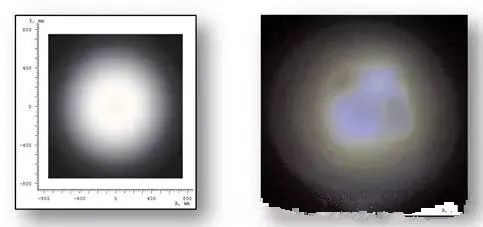
Figure 2 LED optical design effect (left) and LED actual lighting effect (right)
LED and other new light sources and lamps are usually very different from traditional light source lamps in terms of luminous characteristics. Different from traditional lighting products, LED products usually adopt an integrated design and require secondary light distribution. For white LEDs that are often used in lighting Said, blue LED plus yellow-green phosphor is usually used to obtain white light. The uneven distribution of phosphor powder on an LED chip due to process limitations will cause changes in the mixing ratio of blue light and yellow-green light in different light emitting directions, which in turn will cause uneven color distribution in the LED chip space. Another cause is the white light produced by multiple RGB LED lamp beads. Due to the difference in color of each lamp bead, there will also be color unevenness.
More importantly, LEDs are very sensitive to heat, and the light output and color of LEDs will change greatly at high temperatures, as shown in Figure 4. In a closed car light environment, not only the overall temperature of the LED light source will be relatively high, but also affected by the heat dissipation structure, the temperature of the LEDs in different locations will be different, which further aggravates the spatial color unevenness of the LED car light Phenomenon.

Figure 3 LED color non-uniformity changes with temperature
It was found that the uneven color of the LED space and the local brightness are too high to cause glare, which affects the appearance of the lamp product and even brings hidden dangers to the lighting. Therefore, the spatial color inhomogeneity of LED has aroused people’s extensive attention. At present, many general lighting LED standards [1, 2] require comprehensive research on the color inhomogeneity of LED space. focus on. Although the requirements for the color uniformity of car lights are not as good as those of ordinary lighting, the current standard of car lights mostly uses two points as the measurement and evaluation criteria for the color performance of LED car lights, which will have shortcomings.
#4 Discussion On The Measurement Scheme Of LED Lights And Analysis Of Test Results
The LED spatial color detection scheme for common lighting is relatively mature, and a distribution spectroradiometer is usually used for detection. A distribution spectroradiometer usually combines a goniophotometer and a spectroradiometer. The spectroradiometer collects light signals in all directions in space and measures and analyzes color parameters such as color coordinates, color temperature and color rendering index.
The spatial color measurement of LED car lights can be measured and analyzed by using a distribution spectroradiometer for reference to the measurement method of general lighting sources or lamps. A distribution spectroradiometer usually includes two parts: a distribution photometer and a high-precision fast spectroradiometer. For the test of car lights, the goniophotometer usually uses the A-ɑ goniophotometer with high precision to measure. Figure 4 is a typical scheme for measuring the A-ɑ spatial spectral radiation. The goniophotometer has a rotation angle accuracy of ±0.01o within. Moreover, higher requirements are put forward for the performance of the spectroradiometer:
- High measurement speed requirements, too long measurement speed will increase the time cost;
- The measurement accuracy is high. The latest version of IES LM-58-13 related to spectral radiation measurement was launched at the end of 2013. It has strict regulations on the bandwidth and stray light performance of the spectroradiometer, and requires that the magnitude of stray light be less than 10 -4 in the range.
- The linear dynamic range is large, especially when the measurement products are rich in variety and the product is updated rapidly, only the linear dynamic range is large enough to meet the measurement needs of various LED lights such as LED headlights, brake lights, and signal lights.
In addition to the scheme on the device, the actual method of measuring the color distribution is also very important. The research of CIE TC2-74 mainly includes: the determination of measurement distance, scanning method and sampling interval [4], and a large number of research results have been published [5,6], and these results can be directly applied to the space of LED lights Color uniformity measurement in progress.
The measured results of spatial color distribution of LED lights
In order to compare the actual working characteristics of LED car lights, this paper chooses LED car headlights and conventional xenon headlights to measure them in the aforementioned distribution spectroradiometer. Judging from the measurement results, the color temperature distribution diagram of LED car lights and conventional xenon lights is quite different.
#5 Summary
With the advent of the application trend of LED car lights, the problem of spatial color unevenness of LEDs cannot be ignored. From the test results, we can see that there is a large difference in the spatial color temperature distribution of LED car lights, and there is a relatively obvious phenomenon of spatial color inhomogeneity. These phenomena will have an impact on the actual use of LED car lights. At the same time, the spatial color Non-uniformity measurements need attention and attention. The light color spatial distribution detection method and measurement equipment layout described in this paper can comprehensively evaluate the luminosity and chromaticity performance of the car lights, and can also provide more accurate information for the detection of LED car lights, which is of great significance for the future research and promotion of LED car lights. has important guiding significance.




